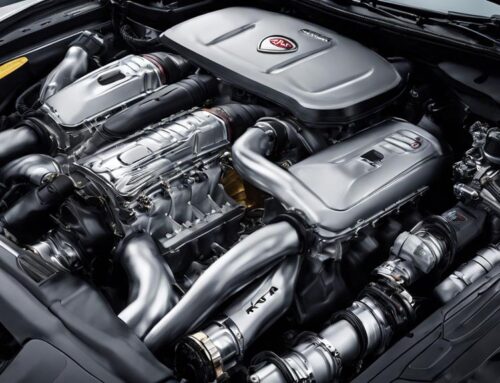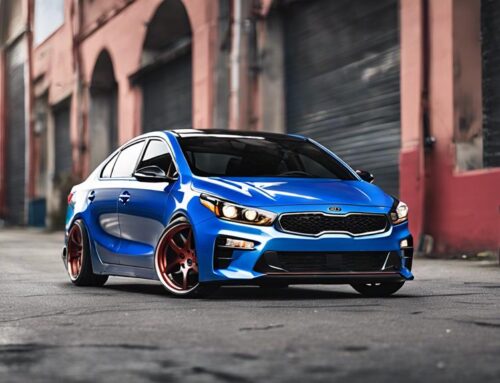The Dodge Challenger, like a thunderous force on the open road, has captivated car enthusiasts for generations. With a rich history spanning back to 1970, this iconic nameplate has evolved and thrived, offering power, performance, and a timeless design.
However, as the automotive industry shifts towards electric vehicles, the Dodge Challenger faces its final model year in 2023. Join us as we explore the evolution, generations, engine options, and the future of this legendary muscle car.
Evolution of the Dodge Challenger
The Dodge Challenger has evolved over the years, with three different generations and various engine options, providing customers with a wide range of choices and customization options.
From its introduction in 1970 to the current third generation, the Challenger has undergone evolutionary changes and performance improvements. Each generation introduced new design elements and technological advancements to enhance the driving experience.
The second generation, produced from 1978 to 1983, saw the introduction of a badge-engineered Mitsubishi Galant Lambda/Sapporo, while the current third generation, introduced in 2008, features a modified version of the LX platform.
Engine options have also evolved, with each generation offering a range of powerful and performance-oriented choices.
The Dodge Challenger’s continuous evolution has allowed it to remain a competitive and sought-after vehicle in the sports car market.
Generations and Models of the Dodge Challenger
Introduced in 1970, the first generation of the Dodge Challenger shared major components with the Plymouth Barracuda. This powerful muscle car was designed to compete with other iconic vehicles of the time, such as the Ford Mustang and the Chevrolet Camaro.
The Challenger offered a range of engine options that provided varying levels of performance and power, including the legendary Hemi V8. Its dimensions, with a wheelbase of 110 inches and a length of 191.3 inches, gave it a commanding presence on the road.
The Challenger’s design, influenced by the launch of the 1967 Mercury Cougar, featured a unique grille design and a muscular stance. With its impressive performance and fierce competition, the Dodge Challenger became a symbol of American muscle cars during its early years.
The Current Generation: Third Generation Challenger
With its debut in 2008, the third generation Challenger became a formidable rival to other iconic American muscle cars. The Challenger’s impact on muscle car culture cannot be understated. It revived the spirit of classic muscle cars while incorporating modern technology and design.
Its powerful engine options, including the 6.1L Hemi V8 and 3.5L V6, offered exceptional performance and exhilarating driving experiences. The Challenger’s role in the modern automotive industry is significant. It has proven to be a successful competitor to the Ford Mustang and Chevrolet Camaro, attracting a loyal following of enthusiasts.
Its bold and aggressive design, reminiscent of the original Challenger, has become an iconic symbol of American muscle. The Challenger continues to resonate with car enthusiasts and is a testament to the enduring appeal of muscle cars in the modern era.
Final Model Year and Future Plans
Stellantis announced in November 2021 that the LD Dodge Charger and LA Dodge Challenger will have their final model year in 2023. This decision is part of Stellantis’ plan to focus on electric vehicles instead of fossil fuel-powered ones.
The shift towards electric vehicles is driven by tougher automotive emissions standards required by the Environmental Protection Agency and the growing demand for sustainable transportation. By adapting to changing market conditions and reducing carbon emissions, Stellantis aims to contribute to a greener future.
This decision marks the end of an era for the Dodge Challenger, a beloved American muscle car known for its powerful performance and iconic design. However, it also signals a new chapter in the automotive industry’s electric future and its commitment to minimizing environmental impact.
Engine Options: Power and Performance
The Dodge Challenger offered a range of engine options that provided varying levels of power and performance throughout its generations. These engine options not only determined the performance capabilities of the Challenger but also influenced its fuel efficiency, torque, and horsepower.
From the early generations to the current third generation, the Challenger featured a lineup of engines that catered to different driving preferences. Whether it was the 198cuin (3.2L) Slant-6, the 340cuin (5.6L) V8, or the monstrous 440cuin (7.2L) engine, there was an engine option for every enthusiast.
The transmission options, including manual and automatic, further enhanced the driving experience. With its wide array of engine options, the Dodge Challenger provided a thrilling ride while also offering choices that catered to fuel efficiency and power.
Dimensions and Design: Aesthetics and Proportions
Carl Cameron, the designer behind the Dodge Challenger’s exterior, also created the iconic look of the 1966 Dodge Charger. The Challenger’s aesthetics and performance were influenced by historical designs and incorporated into its own unique design.
Here are four key points about the dimensions and design of the Dodge Challenger:
- Influenced by the 1967 Mercury Cougar: The Challenger’s design was influenced by the launch of the 1967 Mercury Cougar, a larger and more luxurious pony car. This influence can be seen in the Challenger’s overall proportions and styling.
- Unique grille design: The Challenger featured a unique grille design based on an older sketch of a stillborn 1966 Charger prototype. This design element added to the Challenger’s distinctive appearance.
- Proportions and measurements: The Challenger had a wheelbase of 110 inches (2,790mm) and measured 191.3 inches (4,860mm) in length, 76.1 inches (1,930mm) in width, and 50.9 inches (1,290mm) in height. These proportions contributed to its muscular and aggressive stance.
- Attention to detail: Carl Cameron’s design for the Challenger paid attention to every detail, from the sculpted body lines to the placement of the iconic Challenger badging. This attention to detail enhanced the overall aesthetics of the vehicle and created a sense of power and performance.
Model Years and Trim Levels: A Walk Through History
Introduced in 1970, the Challenger offered a range of model years and trim levels, providing customers with a wide array of choices and customization options.
Over the years, the Challenger has evolved its features and gained popularity with different trims. In its early years, the Challenger was available in two series: Challenger and Challenger R/T. The base model offered engine options of an inline-6 or V8, while the Challenger R/T featured a powerful 383cuin (6.3L) Magnum V8.
As time went on, new trims and engine options were introduced, including the Special Edition hardtop with additional appearance, convenience, and comfort features. This allowed customers to tailor their Challenger to their specific preferences, making it a sought-after muscle car for enthusiasts.
The evolution of features and the popularity of different trims have contributed to the enduring appeal of the Dodge Challenger.
Customization and Personalization Options
Customers have the opportunity to personalize and customize their Dodge Challenger with a wide range of options and features. Here are four key customization options and interior features available for the Dodge Challenger:
- Interior Upholstery: Customers can choose from a variety of upholstery options, including premium leather, cloth, or a combination of both. These upholstery options allow customers to tailor the interior of their Challenger to their personal taste and style.
- Infotainment System: The Dodge Challenger offers a modern and advanced infotainment system. It includes features such as a touchscreen display, smartphone integration, Bluetooth connectivity, navigation system, and premium audio system. These features enhance the driving experience and provide entertainment and convenience while on the road.
- Driver Assistance Features: The Challenger can be equipped with various driver assistance features, such as blind-spot monitoring, rearview camera, adaptive cruise control, lane departure warning, and forward collision warning. These features help improve safety and provide peace of mind during daily commutes or long journeys.
- Performance Enhancements: For customers seeking a more exhilarating driving experience, the Challenger offers performance enhancements such as sport-tuned suspension, Brembo brakes, launch control, and performance exhaust systems. These enhancements enhance the Challenger’s performance capabilities and allow drivers to unleash the full potential of their vehicle.
Overall, the Dodge Challenger provides customers with a wide range of customization options and interior features to create a personalized and tailored driving experience.
Dodge Challenger replacement keys
Dodge Challenger replacement keys are an indispensable solution for those who have lost their keys, encountered damage, or need spare keys for their prized muscle car. These replacement keys provide a seamless means of access and operation for Challenger owners, whether they prefer traditional keys or the modern key fobs equipped with remote functionalities. Designed to integrate seamlessly with the Challenger’s advanced security system, obtaining replacement keys is a straightforward process through authorized dealerships or professional locksmith Dodge services. With Challenger replacement keys, drivers can quickly and effectively resolve any key-related issues, ensuring that their exhilarating driving experiences continue without interruption in their iconic American muscle car.
Frequently Asked Questions
What Are the Upcoming Electric Models That Stellantis Plans to Release After Discontinuing the Dodge Challenger?
Stellantis plans to release upcoming electric models after discontinuing the Dodge Challenger. These models will offer advanced performance and features, catering to the growing demand for sustainable transportation. In comparison, the Ford Mustang and Chevrolet Camaro also provide impressive performance and features.
How Does the Dodge Challenger Compare to Its Main Competitors, the Ford Mustang and Chevrolet Camaro, in Terms of Performance and Features?
The Dodge Challenger offers competitive performance and features compared to its rivals, the Ford Mustang and Chevrolet Camaro. It boasts powerful engine options and a range of features that cater to different driving preferences and customization needs.
Are There Any Limited Edition or Special Edition Versions of the Dodge Challenger Available Throughout Its Generations?
Limited edition and special edition versions of the Dodge Challenger have been available throughout its generations. These versions offer unique features, performance enhancements, and exclusive designs, catering to enthusiasts seeking a more distinctive and collectible Challenger experience.
What Are Some Notable Design Elements of the Dodge Challenger That Set It Apart From Other Muscle Cars?
Notable design elements of the Dodge Challenger include a bold and aggressive exterior, reminiscent of a prowling predator. Unique features such as the iconic split grille, muscular body lines, and retro-inspired styling set it apart from other muscle cars.
Can You Provide a Breakdown of the Sales Figures and Popularity of Each Generation of the Dodge Challenger?
Sales figures and popularity vary for each generation of the Dodge Challenger. Factors like design, performance, and market demand contribute to the overall success of each model. Detailed data on sales figures and popularity can be analyzed for a comprehensive breakdown.








